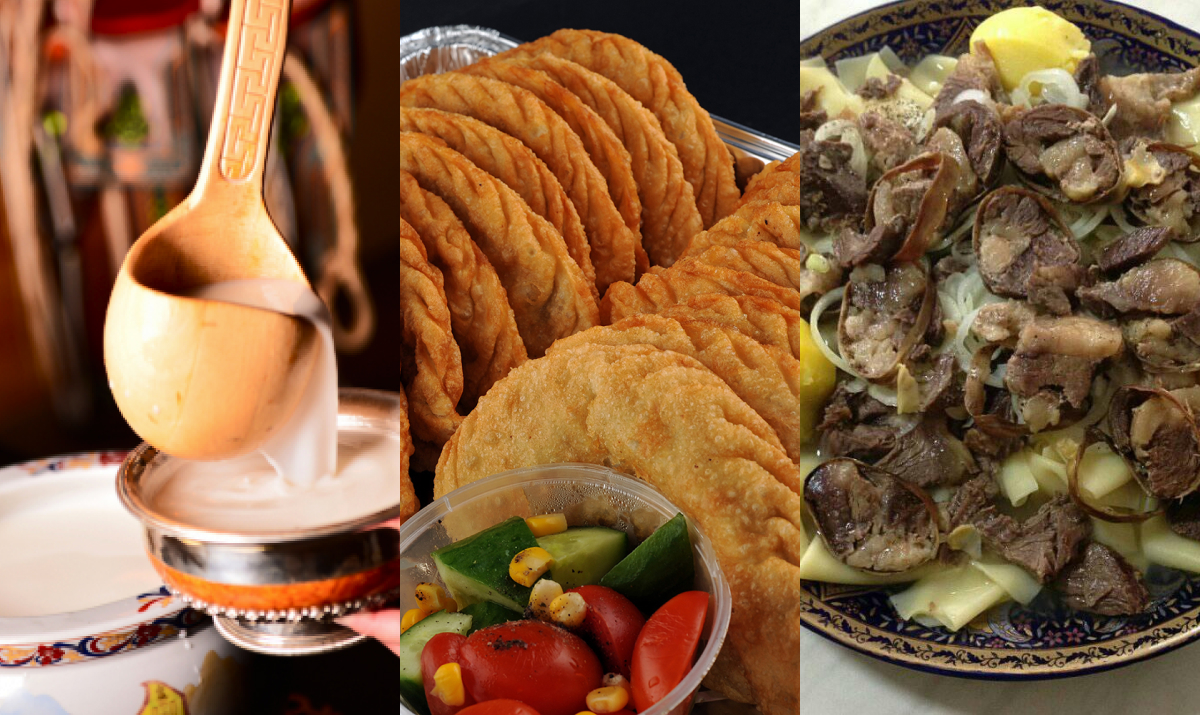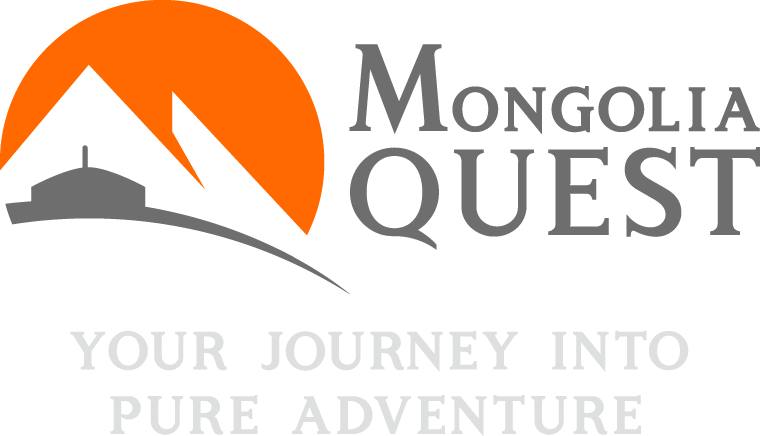Celebrations and festivals in Mongolia are not only about cultural significance but also an opportunity to indulge in delicious feasts. The aroma of delectable foods and the taste of refreshing drinks add an extra layer of joy to the festivities. Let’s delve into the culinary delights of Mongolia’s two major festivals: The Naadam and the Golden Eagle Festival.
Naadam Festival: A Culinary Extravaganza
The Naadam Festival dates back to the time of the founding of the Xiongnu Dynasty, i.e., the 1st-2nd century BC. References to the festival in sources and writings provide evidence of this historical origin, with horses, wrestling, and archery considered as the foundation of the state. The Huns organized festivals to enhance the unity of the fragmented tribes and the combat skills of the soldiers, a tradition that has evolved into the three traditional Mongol games.
Held officially from July 11th to 15th, the Naadam Festival is celebrated in every soum and aimag across Mongolia throughout the summer. The local Naadam celebrations, set in the vast Mongolian landscape, offer an authentic experience with close interactions with locals and engaging activities.
Naadmyn Khuushuur:
A must-try during the Naadam is “Naadmyn Khuushuur,” a round, flat, deep-fried dough filled with savory ground mutton or beef, seasoned with onion, black pepper, and salt. Unlike the usual half-moon shape of khuushuur, Naadmyn Khuushuur is uniquely round and flat, available at the main festival venue for less than $1 each. When visiting the Naadam venue, every Mongols go on a quest to find the best khuushuur.
Tips: Please keep in mind that when we eat khuushuur, we first roll it into the shape of a burrito to make it easy to hold and bite, and we eat it with our hands. Don’t consume more than three, as they are deep-fried and filled with meat. Eating more may lead to digestion issues.
Airag:
To complete your Naadam experience, sipping on “airag,” fermented mare’s milk, is essential. This traditional summer drink has been enjoyed by Mongols for over 2,000 years, boasting a mild alcohol content of 2-2.5%. Central aimags are renowned for their distinct airag production techniques and flavors.
Depending on the location, the process of fermenting airag differs. The most common way is pouring mare’s milk into a leather sack that has been previously used to ferment airag, which helps introduce beneficial microorganisms for fermentation. To expedite fermentation, the mare’s milk is churned 3,000-4,000 times with hand in the leather sack. Another method involves mixing the mare’s milk with yogurt or using dried fermentation from the previous year’s autumn airag mixed with millet and raisins. Again, to enhance fermentation, the mixture has to be churned thousands and thousands times.
The end result is a cool, sour, and refreshing drink, a testament to Mongolian culinary heritage. Apart from quenching thirst, airag is rich in Vitamins A, C, and B, and is quickly absorbed by the body, improving metabolism. In Mongolia, we have many health resorts that offer mare’s milk or airag.

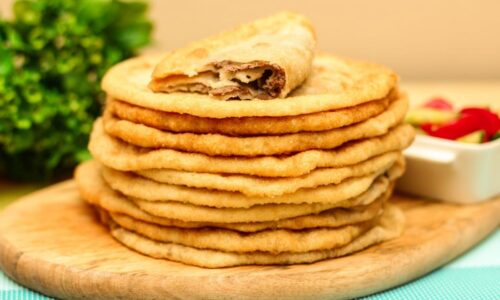
TIPS: Since it’s easy to digest, you may need to visit the toilet regularly, like after drinking beer. If you’re visiting a family and offered airag, don’t drink it all at once unless you really want a refill. The host may pour you another if your bowl is empty.
Golden Eagle Festival: A Feast in the West
The Golden Eagle Festival is a highlight of Mongolia’s cultural calendar, taking place annually during the first week of October in the remote province of Bayan-Olgy. Home to Kazakh nomads who have trained Golden Eagles for generations, this event showcases the unique bond between hunter and bird. Over two days, Kazakh competitors demonstrate their eagles’ hunting prowess, engaging in activities such as kukbar (horseback tug of war), archery, and horse racing. The festival also features the traditional adornment of eagles in colorful “eagle costumes,” adding to the vibrant atmosphere. The president of Mongolia Quest, Badral Yondon was one of the founding members when the Golden Eagle Festival was established in the year 2000.
Kazakh Culinary Highlights:
While the Golden Eagle Festival doesn’t have dedicated festival foods, the Kazakh cuisine offers a rich array of dishes:
- Boiled Sheep Head or Lamb Hip Bone: A delicacy offered to honored guests.
- Hand-Made Noodles with Stir-Fried Meat and Vegetables: A popular dish in Kazakh families.
- Dairy Products: During autumn, dairy products take center stage in Kazakh households, with a variety consumed during lunch.
- Airag: Kazakh people are known for their airag, a treat offered to esteemed guests. However, availability diminishes after September 25th due to lowered mare’s milk production.
- In Bayan-Olgy aimag’s restaurants, dishes like Sirne, Besbarmak, hand-made noodles with stir-fried meat and vegetables, goulash, and Russian specialties like tefteli are readily available.
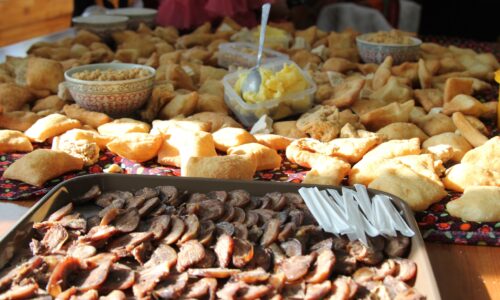
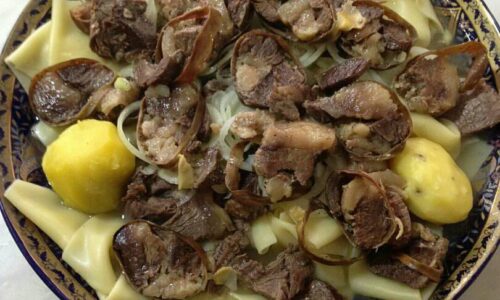
💡TIPS: The Kazakh diet is mostly meat-based, with vegetables being relatively scarce. Additionally, when visiting Kazakh families, the host will typically offer you tea. When you have finished drinking and do not wish to have more, it is customary to cover the empty cup with your hand. If you leave the empty cup uncovered, the host may refill it again.
These culinary delights add a flavorful dimension to the vibrant tapestry of Mongolia’s festivals, creating memorable experiences for locals and visitors alike. Embrace the spirit of adventure and discovery as you embark on a journey to uncover the cultural treasures of Mongolia at the Naadam and Golden Eagle Festivals with us! Check out our From Gobi to the Golden Eagle Festival, Naadam Festival of Mongolia and A Horse Song tours!

